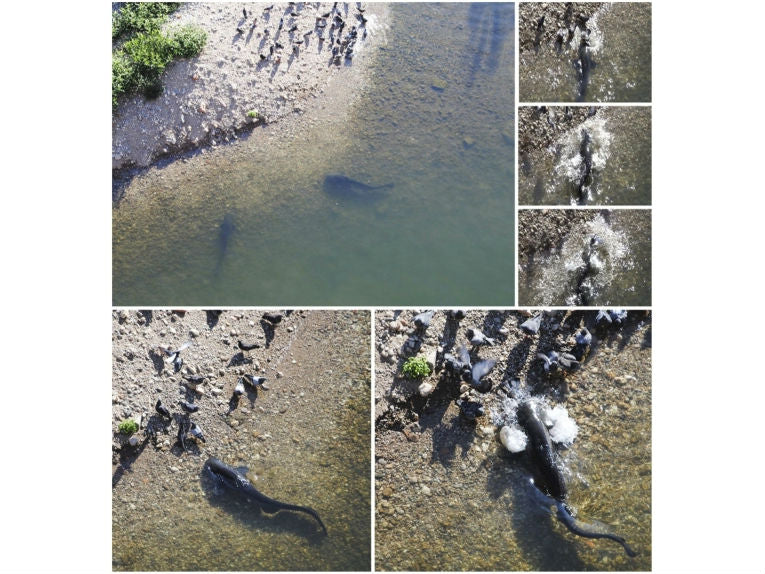The sheer unadulterated cheek of it! For a simple fish to grab 28% of one of the warm-blooded, upper classes. When it uses its predatory skills in an alien environment, this species has added to its dietary requirements! The European catfish, Silurus glanis, in southern France is in an alien but similar ecosystem to its own.
The home base is in eastern Europe, beyond the Rhine. It beaches itself by propelling its body, without being stranded, in a similar method to that used by killer whales or dolphins. Only certain individuals perpetrate this novelty among catching procedures, which begs the questions, are the individuals smaller and more able to return to water, or larger and stronger in order to get to the pigeon in the first place?
The catfish population responsible for the crime, with a body size from 90 to 150cm, foraged near a small island where pigeons fed. They attacked only moving targets probably because of the vibrations in the water, rather than any sighting of the prey. Still pigeons were left alone! For a period of from 1 to 4 seconds, they beached, usually partially, then they quickly took the pigeon back into the water if they were successful.
Breaching Catfish; Credit: © PLoS ONE
When the fish were analysed by stable isotope analysis, it was found that the more pigeons they ate, the less fish or crayfish were consumed. Also as the fish reached 200cm in size there was a marginally significant contribution from length. The authors want to investigate individual situations next, as this research has obvious great importance to alien predators, the evolution of new behaviours by them and also speciation. "Supercat" ( or Supersilurus) could be just around the corner.
Julien Cucherousset and his colleagues at the University and elsewhere in Toulouse's scientific community publish their paper in PLoS ONE, but hope to extend the boundaries of their own ecosystem just as the catfish has done. The need is to study such extreme individual behaviour in adapting a species to new environments. Crossing the land/water interface for predation has been achieved only with very few species such as archer fish before. We await the next study with bated breath..










